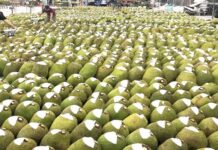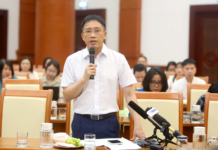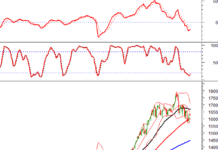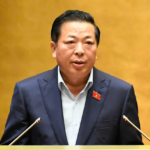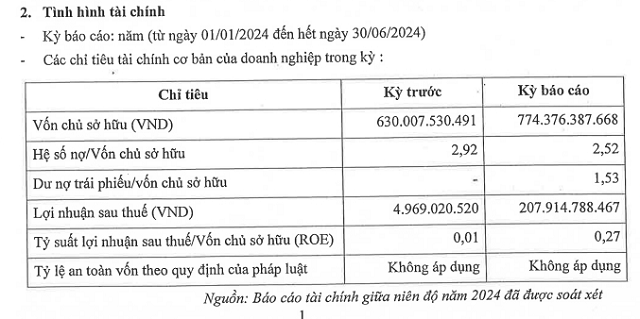Vietnam’s Trade Performance: Overcoming Technical Barriers for Sustained Growth
According to statistics from the General Statistics Office, in the first ten months of 2024, Vietnam’s total import and export turnover is estimated to reach nearly $647.9 billion, a 15.8% increase compared to the same period last year. Exports reached nearly $335.6 billion, a 14.9% increase, while imports reached $312.2 billion, a 16.8% increase. The trade balance continues to maintain a surplus of $23.3 billion. Notably, seven export commodity groups achieved a turnover of over $10 billion, accounting for 66.5% of the total export value.
CHALLENGES FROM NEW “TECHNICAL BARRIERS”
At the workshop on “Promoting Import and Export – Solutions for Small and Medium-sized Enterprises,” Ms. Tran Thi Thanh Tam, Director of the Small and Medium-sized Enterprise Support Center (Vietnam Chamber of Commerce and Industry – VCCI), stated that despite positive results in export activities, exports to key markets in the last months of 2024 still face many challenges.
The unpredictable geopolitical backdrop, along with the global economic and trade growth slowdown, poses significant pressure on export enterprises. Major markets are tightening import standards, focusing on sustainable development, consumer safety, and environmental protection issues.
Additionally, sea freight rates remain high, negatively impacting logistics costs. The impacts of Super Typhoon Yagi on domestic production increase the risk of supply chain disruptions and transportation costs, making export activities more challenging.
Furthermore, there are considerable risks in payment and currency exchange rates that Vietnamese enterprises have encountered. This has led to increased demand for capital and financial support solutions from banks, but not all enterprises can access capital and preferential support solutions.
Sharing insights on current trends in international trade, Mr. Tran Thanh Hai, Deputy Director of the Import-Export Department (Ministry of Industry and Trade), mentioned that the US-China trade tensions and the Covid-19 pandemic made many manufacturers realize the risks of relying on a single fixed production location, triggering a wave of production shifts out of China. Meanwhile, Chinese producers are actively seeking and establishing overseas production bases to diversify their supply chains and mitigate risks.
It is forecasted that in 2025, the world market will show signs of stability, inflation in major markets will decrease, demand and purchasing power will recover, domestic production will stabilize, and sources of goods will be abundant. FTAs will take effect, increasing turnover in markets with FTAs, and new FTAs will be implemented. Therefore, it is expected that import and export will maintain a good growth rate from now until Q1/2025, with balanced growth across commodity groups and markets.
However, there are challenges in the form of new “technical barriers” that need to be identified, including standards and regulations related to quality, safety, the environment, labor, and the risk of facing trade remedy measures…
Mr. Nguyen Anh Duong, Head of the Comprehensive Research Department, Central Institute for Economic Management (CIEM), pointed out that while global economic recovery and the network of FTAs have created opportunities to increase exports, along with the recovery of the supply chain in Asia, there are challenges from the trend of sustainable development and the increase in trade remedies in many markets. Meanwhile, the green transition process of domestic enterprises is relatively slow, affecting their ability to adapt to sustainable development regulations in some major markets.
TAKING THE INITIATIVE TO INNOVATE AND INVEST IN TECHNOLOGY
Difficulties in accessing capital, especially green credit, lead to increased cost pressure and foreign exchange rate risks. Accessing capital according to the value chain is not common in Vietnam, and manufacturing enterprises still rely mainly on commercial bank credit, while capital mobilization through the stock market is modest.
Enterprises face challenges in accessing foreign currency loans to import inputs, auxiliary materials, and raw materials for export production, while the current legal regulations only focus on a few forms, such as payment envelopes and letters of credit…
To increase exports, Mr. Nguyen Anh Duong suggested that small and medium-sized enterprises proactively study new regulations in target markets and develop response plans. They should also take the initiative to innovate and build long-term strategies. Investing in technology, human resources, and leveraging FTAs to expand markets are essential. Additionally, enterprises need to focus on applying digital technology to enhance competitiveness and professionalism and implement backup plans to minimize risks from market fluctuations.
Furthermore, enterprises should research and implement new business models (such as circular and digital economies…) and particularly enhance experience sharing related to adapting to new trends and regulations on green development, environmental protection, such as the Carbon Border Adjustment Mechanism (CBAM), the EU Deforestation Regulation (EUDR), and personal data protection… in major markets. At the same time, they should propose appropriate technical support from partners (it is challenging for government agencies to provide specific support proposals from partners).
Regarding the government’s role, Mr. Duong suggested actively monitoring and evaluating new trends and regulations to provide relevant information to the business community. Guide enterprises to build strategies to take advantage of incentives in FTAs, provide appropriate support to enterprises without contradicting international commitments and permitted under international treaties.
Simultaneously, develop programs and initiatives to help enterprises participate more deeply in global and regional value chains. Research solutions to adjust regulations adaptively to new trends (harmonization with international standards, considering the adaptability of domestic enterprises). Participate in establishing international rules suitable for digital transformation, green transition…
According to Mr. Lam Duc Thuan, Vice Head of the Management Board of Industrial Parks in Hung Yen Province, enterprises must seize opportunities and implement innovative solutions with the right direction and practical approach to market access and enhance competitiveness.
Mr. Tran Thanh Hai stated that small and medium-sized enterprises need to build long-term business orientations and plans, focusing on competition in the context of market openness. They should promote trade promotion, take advantage of government support, explore and utilize FTAs to expand markets for export goods, invest in human resources development and digital technology application… In addition, they need to proactively prepare contingency plans to address incidents, risks, and fluctuations in the market and be vigilant against fraudulent and deceptive acts in international trade.
In the field of logistics, Mr. Ngo Khac Le, Vice Secretary-General of the Vietnam Logistics Services Enterprises Association (VLA), recommended that enterprises apply flexible warehouse solutions, use bonded warehouses, and shared warehouses to reduce storage costs and increase cargo handling speed… Optimize routes and transport modes by combining multimodal transport (sea, air, road, and rail) to optimize costs and transport time.
On the other hand, enterprises need to focus on supply chain risk management, establish contingency plans to minimize risks when facing unexpected incidents such as oil price fluctuations, natural disasters… Collaborate with other enterprises in using logistics services and cooperate with partners in the supply chain to leverage scale advantages and create a strong network of shippers…
At the event, delegates proposed that the State should actively develop mechanisms and policies adapted to global trends. Providing information on new technical standards, guiding enterprises to take advantage of FTA incentives, and developing initiatives to help enterprises participate more deeply in the value chain are top priorities.
The banking sector needs to be more proactive in providing smart and flexible financial solutions to ensure capital for export activities. Priority should be given to loans for the import-export sector, and appropriate credit products should be developed to help enterprises optimize costs…
https://postenp.phaha.vn/chi-tiet-toa-soan/tap-chi-kinh-te-viet-nam





